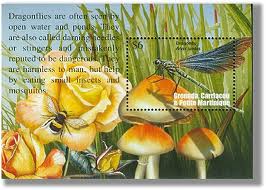Parasites and pesticides are among the suspected principle drivers of pollinator declines. However, especially in the case of key wild pollinators, there is insufficient data on the relative impact of these individual environmental stressors and if they interact to increase detrimental effects. Using a fully crossed factorial design, we investigated how laboratory exposure to neonicotinoid insecticides, thiamethoxam and clothianidin, over a 9-week period and a prevalent trypanosome gut parasite Crithidia bombi affects various crucial colony traits of the bumblebee Bombus terrestris. We show that chronic dietary exposure from an early stage of colony development to doses of thiamethoxam and clothianidin that could be encountered in the field truncated worker production, reduced worker longevity, and decreased overall colony reproductive success. Further, we demonstrate a significant interaction between neonicotinoid exposure and parasite infection on mother queen survival. The fate of the mother queen is intrinsically linked to colony success, and under combined pressure of parasite infection and neonicotinoid exposure mother queen survival was lowest. This indicates increased detrimental effects of combined exposure on this crucial colony trait. Combined effects may be exacerbated in stressful natural environments where more pronounced parasite virulence is expected. Our findings reiterate that dietary exposure to neonicotinoids can impact on bumblebee colony performance and fitness. The indication of combined negative effects of ecologically relevant pressures suggests additional adverse consequences for long-term population dynamics under complex field conditions.
Source:
Aline Fauser-Misslin, Ben M. Sadd, Peter Neumann, Christoph Sandrock (2013) Journal of Applied Ecology
DOI: 10.1111/1365-2664.12188
http://onlinelibrary.wiley.com/doi/10.1111/1365-2664.12188/abstract

- Login om te reageren
